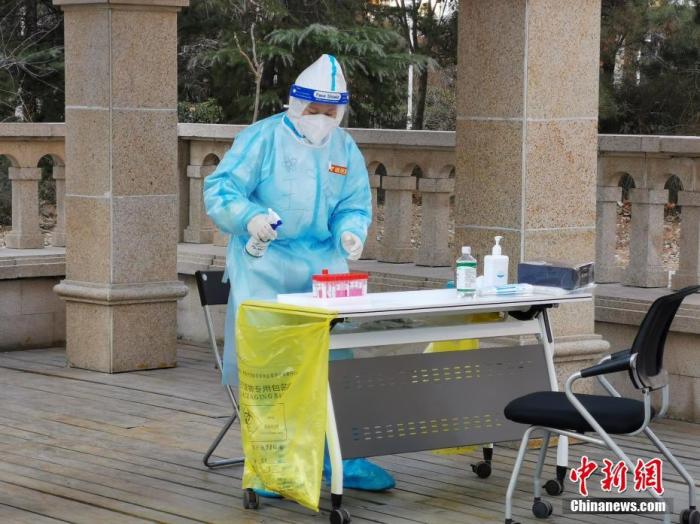Chinanews.com, January 13th. The State Council’s Joint Prevention and Control Mechanism held a press conference on the 13th. Guo Yanhong, Inspector of the Medical Administration and Hospital Administration of the National Health Commission, introduced on the 13th that a cluster of new crown pneumonia outbreaks have occurred in Hebei and Liaoning recently. .
For the patients in this epidemic, one is that there are more elderly people, and the other is that there are more people suffering from cardiovascular and cerebrovascular diseases.
According to statistics, the average age of confirmed cases in Hebei is 50 years old, and 30% of cases over 60 years old.
People over 60 in Liaoning account for 37%, with an average age of 53 years.
In order to support the treatment in Liaoning and Hebei, the National Health Commission mobilized 30,000 ml of plasma to support the treatment of critically ill patients in the two places.
Data map: On January 10, a community in Shijiazhuang City, Hebei Province conducted the second full-time nucleic acid test.
Photo by Qu Guanhua issued by China News Service
Guo Yanhong pointed out that after the outbreak, the National Health Commission attached great importance to the medical treatment of patients. According to the principle of "four concentrations", that is, to concentrate patients, experts, resources, and treatment, Hebei immediately vacated better conditions. Designated hospitals will concentrate all patients in designated hospitals for centralized treatment.
At the first time, a national expert team was sent to the designated hospital with the local expert team to provide patients with the best diagnosis and treatment plan.
At the same time, we also adhere to the regular remote consultation system for critically ill patients including Liaoning and Hebei, and maximize the quality of treatment through the "four concentrations".
At the same time, the National Health Commission insisted on moving forward at the critical point of treatment, and for mild patients, strengthened the observation and monitoring of patients, especially determined some clinical early warning indicators, including early warning indicators of inflammation and early warning indicators of hypoxemia. , Strengthening monitoring can intervene early and reduce the transition from mild to severe.
In the treatment of critically ill patients, Guo Yanhong introduced that it adheres to multi-disciplinary, one person, one policy. In addition to the critically ill team, there are also infection and respiratory teams in the national-level team, targeting the elderly and patients with underlying diseases. A team of experts for basic diseases.
In addition, a team of Chinese medicine has been mobilized to form a multidisciplinary diagnosis and treatment team, which not only treats the new coronary pneumonia, but also treats the patients' basic diseases.
After a year of patient treatment, we have also accumulated some experience in the treatment of critical illness, such as early application of convalescent plasma from recovered patients and the use of integrated Chinese and Western medicine.
In addition to the multidisciplinary team, strengthen nursing work, strengthen nutritional support, psychological support and rehabilitation guidance.
Through multidisciplinary comprehensive diagnosis and treatment, the best treatment effect can be achieved.
"In order to support the treatment in Liaoning and Hebei, we have separately mobilized 30,000 ml of plasma to support the treatment of critically ill patients in the two places. Through various methods and measures, the treatment of critically ill patients in the two places is generally relatively stable. The rescue work is full of confidence." Guo Yanhong said.

